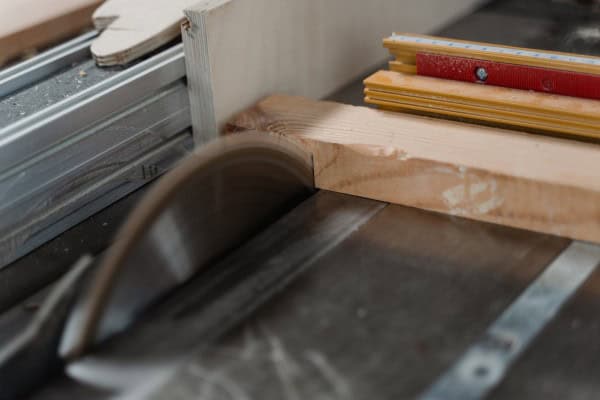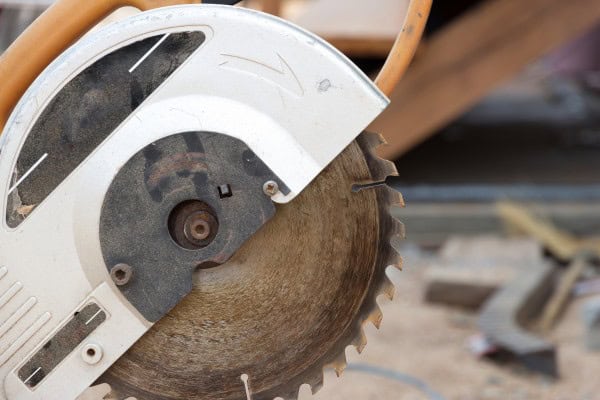
Choosing the best circular saw blade is more than just a decision based on price—it’s about understanding the specific needs of your cutting task. Whether you’re a professional contractor, a DIY enthusiast, or someone in between, choosing the right blade can drastically affect the quality, efficiency, and safety of your work. Let’s dive into the factors that make up a great saw blade and how you can choose the best one for your job.
To achieve clean, smooth cuts, choose a circular saw blade with a high tooth count (80-100 teeth). These blades are ideal for finish cuts, providing precision and reducing splintering, especially on delicate materials like hardwood and plywood. Ensure to match the blade to the material for optimal results.
What makes it so effective, and how can you ensure you’re using the right one for your material?
Transitioning from understanding the basics of saw blades to their application in real-world projects is essential for optimizing your choice.
Best Circular Saw Blade for Finish Cuts?
When you’re dealing with finish cuts, precision is key. The last thing you want is to have to spend hours sanding down rough edges or worrying about splintering. But what exactly makes a saw blade ideal for finish cuts? Let’s break it down.
Why You Need a Blade with More Teeth for Finish Cuts
Blades designed for finish cuts generally feature more teeth, typically between 80-100 teeth. These fine-tooth blades are designed to minimize the tearing of wood fibers and produce a clean, smooth edge. Let’s take a closer look at why that matters.
A Fine-Tooth Blade for Perfect Edges
Finish cuts often involve delicate woods or materials that are prone to splintering—think hardwoods, veneer, or plywood1. In such cases, you need blades that can slice through the material without causing rough edges or chip-outs. A high tooth count increases the number of cutting points per inch, allowing for smoother cuts and cleaner finishes.
But, here’s the thing: while more teeth help improve the quality of the cut, they can also reduce the cutting speed. That means you’ll need a little more patience and potentially a more powerful saw to maintain cutting efficiency.
Key Features to Look For
- High tooth count: The more teeth, the smoother the finish.
- Carbide-tipped teeth: These last longer and maintain sharpness.
- Thin kerf: A thinner blade reduces material wastage and cuts down on motor load.

Why I Choose These Blades for My Projects
I’ve had my fair share of experiences with finish cuts. For example, when I was working on a custom oak cabinet, I learned quickly that a 100-tooth blade was the difference between a project I could be proud of and one that required a lot of post-cut sanding. It cut through the wood smoothly, with very little visible grain disruption. That’s what made me fall in love with high-tooth count blades for finish cuts.
When to Use Finish-Cut Blades
You’ll generally want to reach for a blade with 80-100 teeth when:
- Working with delicate hardwoods (like cherry or oak).
- Cutting thin, brittle materials that are prone to splintering.
- You want a mirror-like finish that requires minimal sanding.
Best Circular Saw Blade for Plywood?
Plywood can be one of the most frustrating materials to cut. It’s prone to splintering, and if you’ve ever tried to make a cut on plywood with the wrong blade, you know how difficult it can be to get a clean edge.
The Right Blade for Cutting Plywood Cleanly
Plywood requires a blade that balances between speed and smoothness. A blade with a tooth count of 60-80 teeth is often the best option, as it can cut through the layers of the plywood cleanly without causing the face to splinter.
Why Thin Kerf Is Important for Plywood
A thinner kerf reduces the stress on your saw and prevents it from binding, which is critical when cutting plywood sheets. The thinner the blade, the less material is wasted, and the more efficient your cutting will be. This also means less strain on the saw’s motor, which can extend its life.
My Plywood Cutting Experience
One of my go-to tools for cutting plywood is a blade with 70 teeth and a thin kerf2. When I first tried it on a large plywood board for a home renovation project, the results were impressive. The cuts were clean, with no tear-out on the back side, which meant less time spent sanding and prepping the edges.
Blade Coatings: Are They Worth It?
Many plywood blades come with a special coating that helps reduce friction and heat build-up. This can be a real advantage when working with plywood, as the blade will stay cooler and maintain its sharpness longer. Coated blades can also help reduce the accumulation of dust and debris, keeping the cutting process cleaner and smoother.
Best Blade for Plywood?
If you’re regularly working with plywood, look for:
- A 60-80 tooth count blade: Great balance of speed and smoothness.
- Carbide-tipped teeth: These blades last longer and handle heat better.
- Thin kerf: Reduces strain on the saw and increases cutting speed.
Blade Design for Plywood
- ATB (Alternate Top Bevel) teeth are great for plywood, as they provide a smooth cut and minimize splintering.
- TCG (Triple Chip Grind) teeth are another solid choice for plywood, especially for thicker sheets, as they help with clean crosscuts.

Best Circular Saw Blade for Wood?
Wood cutting might seem straightforward, but different types of wood require different types of saw blades. Whether you’re working with softwoods or hardwoods, the right blade can make all the difference.
The Best Blade for General Wood Cutting
For cutting through regular lumber, like pine, fir, or cedar, you generally want a blade with a lower tooth count—somewhere between 24 and 40 teeth. These blades cut faster and with less resistance, but the edges might be a bit rougher compared to finish blades.
Why Fewer Teeth Work Best for Wood
When you’re cutting thicker, softer woods, like pine or cedar, the saw needs to move faster. A blade with fewer teeth (24-40 teeth) is better at moving through the wood quickly without bogging down. This also helps you get through large volumes of material faster, which is a must on any job site.
Real-World Experience: Pine vs. Hardwood
When I was working on framing for a deck, I used a 24-tooth blade to rip through some 2×4 pine boards. It made quick work of the wood, but the edges were rough. I was okay with that, since the boards would be covered up. However, if I were cutting something like oak3, I’d definitely reach for a 40-60 tooth blade for a cleaner cut.
When to Use Low Tooth Count Blades
- When you’re working with softwoods like pine, fir, or cedar.
- If speed is more important than a perfectly smooth cut.
- When you need to make long, straight cuts across thicker materials.
Choosing Between Different Tooth Styles
There are two common tooth styles for wood cutting:
- FTG (Flat Top Grind): Best for ripping with rougher edges but fast cutting.
- ATB (Alternate Top Bevel): Best for crosscutting, providing smoother edges but slower cuts.
Circular Saw Blade Teeth Guide
Understanding the relationship between teeth count and cutting performance is crucial. So, let’s break down what you need to know about teeth count and how it affects your cuts.
A Breakdown of Teeth Count for Every Job
The number of teeth on your circular saw blade directly impacts the quality and speed of your cuts. The more teeth a blade has, the smoother the cut4 will be, but the slower the blade will move through the material.
| Zähne zählen | Best For | Geschwindigkeit | Cut Quality |
|---|---|---|---|
| 24-30 | Ripping thick lumber, softwoods | Fast | Rough |
| 40-60 | General wood cutting | Moderate | Clean |
| 80-100 | Finish cuts, hardwoods | Slow | Smooth |
Understanding Tooth Geometry
The geometry of a saw blade’s teeth is as important as the tooth count. For example, ATB (Alternate Top Bevel) teeth are designed for clean crosscuts, while TCG (Triple Chip Grind) teeth are used for tougher materials. Each type has its own strength and use case.
Choosing the Right Teeth for the Job
For general woodwork, a blade with 40-60 teeth is a great choice. If you’re working with a tougher material like hardwood or laminate, you may want a blade with 80-100 teeth.
Fazit
In the world of circular saw blades, choosing the right blade for the job is essential to both the quality of your work and your overall efficiency. It depends on what you’re cutting. Whether you need precision for finish cuts or speed for ripping lumber, there’s a blade for the job. Understanding teeth count and blade features helps you select the best one, and you can make an informed decision.
-
Plywood is a common material but prone to tear-out due to its layered construction. ↩
-
A thin kerf blade minimizes material waste and reduces the strain on the saw, especially useful for clean, efficient plywood cutting. ↩
-
How to achieve smooth, precise cuts when working with hardwoods like oak, which require finer blades due to their density and grain pattern. ↩
-
Help understand the relationship between tooth count and cut smoothness, providing technical details on blade performance and ideal use cases. ↩